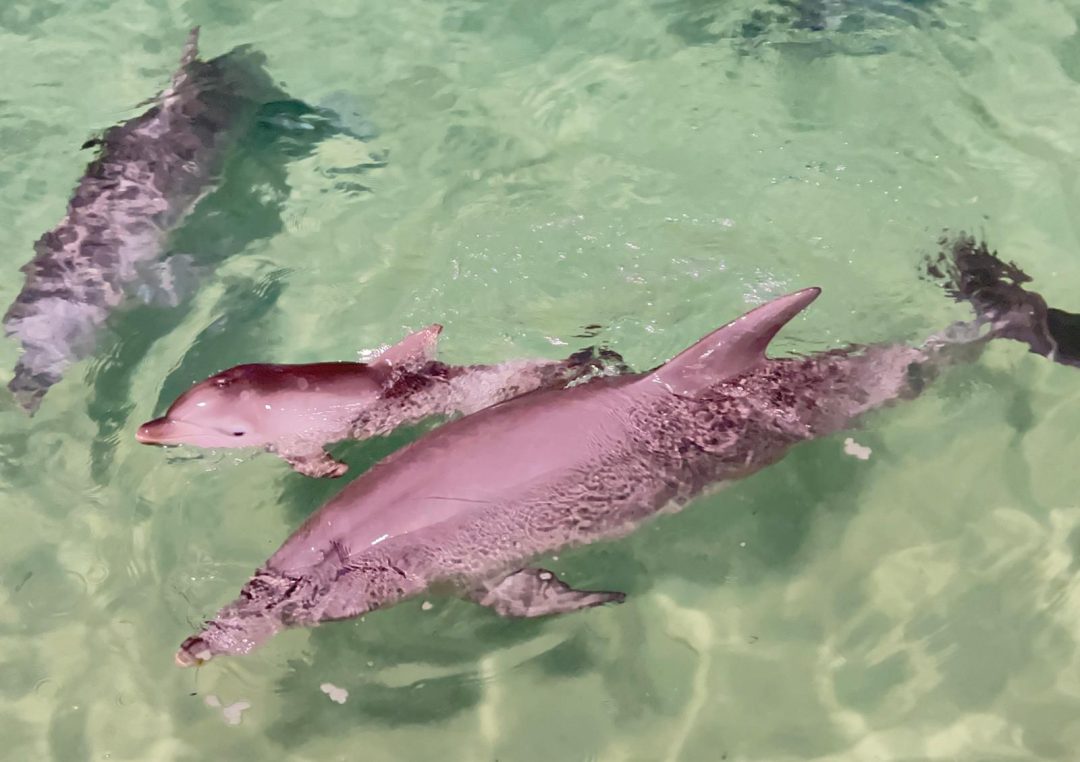Tangalooma Island Resort is thrilled to announce the arrival of a new baby dolphin to its wild dolphin family. Silhouette, a 19-year-old dolphin affectionately known as ‘Sil,’ has introduced her newborn calf to the resort’s visitors and staff. The calf, first sighted on 7 June, has since been observed six times, bringing joy and excitement to everyone at the resort.
Silhouette, the granddaughter of Beauty—one of the first dolphins in the Tangalooma Eco Centre’s Wild Dolphin Feeding program—has proven to be a devoted mother. Already mum to 9-year-old Betts and 5-year-old Comet, Sil is delighted with her newest addition. The older brothers have been seen staying close to their new sibling during Tangalooma’s sunset dolphin encounters.
Though the calf is still young, measuring approximately 80cm and weighing an estimated 15-20kg, it is showing signs of being healthy and thriving. The gender of the calf remains undetermined, but it has already demonstrated strong swimming skills, which bodes well for its survival in the wild.
The calf, yet to be named, displays a playful and independent personality, much like its mother. Another male dolphin from the pod, Calypso, has been observed acting as a babysitter, allowing Silhouette to rest during their visits to Tangalooma. This cooperative behaviour underscores the strong social bonds within the pod and the natural harmony of marine life in Moreton Bay.
Sue Hassard, Tangalooma’s Eco Centre and Dolphin Team Manager, expressed her delight with the newborn’s arrival, stating, “We look forward to seeing much more of this spirited little calf as it matures.”
Hassard explained that the calf will nurse from its mother for around 12-24 months and will begin to hunt and catch fish independently at around six months of age. The Tangalooma Eco Rangers ensure not to feed the calf until it is at least 24 months old, allowing it to develop essential hunting skills for its long-term survival and welfare in the wild.
Interestingly, the calf’s gender will determine much of its future connection to the pod. “If it’s a girl, she will always be part of her mother’s pod,” said Hassard. “But if it’s a boy, he’ll eventually venture off on his own around the age of three.”

